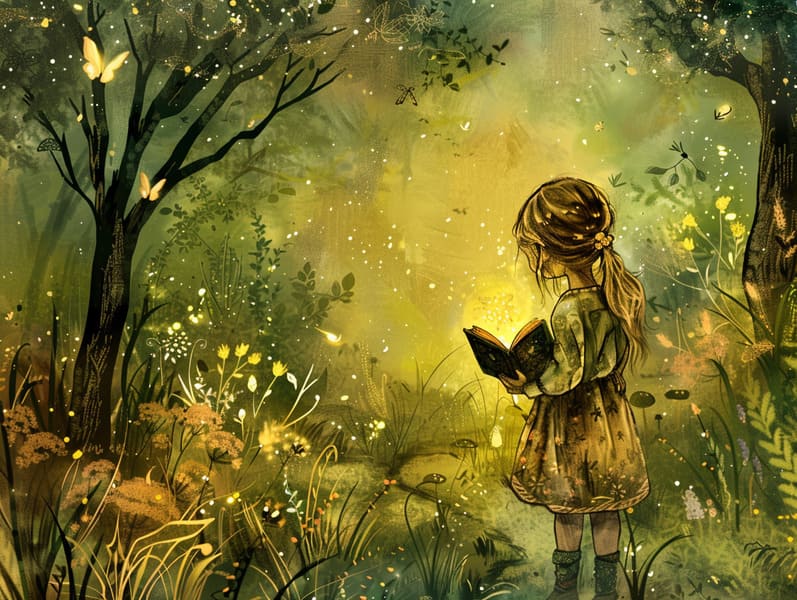The Creation of Fairy Tales and Their Eternal Captivation.
The Creation of Fairy Tales and Their Eternal Captivation.
Blog Article

Ancient fairy tales have legendary status. These tales have been told from one generation to the next centuries before they were ever documented. They arose from a variety of cultures, including Indigenous traditions. They were initially narrated among elders, often carrying themes and messages reflective of the societal norms and beliefs of the time.
The famous Grimm duo, the two Grimm brothers, were among the first to collect many of these beloved tales. Their published works, "Grimm's Children's Stories," included classics like "The Story of Cinderella," "Hansel and Gretel," and "Snow White," which have since become hallmarks in the world of classic fairy tales. Similarly, H. C. Andersen's charming narratives, such as "The Little Mermaid," and "The Story of the Ugly Duckling," have captivated hearts worldwide, establishing their place in the pantheon of famous fairy tales.
Though they are old, these tales remain as relevant as ever, especially as kids' bedtime tales. These charming stories are now available in numerous formats, including vividly illustrated books, whimsical animations, and web-based fairy tales.
Their enduring popularity can be linked to several whimsical characteristics:
Vital Lessons: Classic fairy tales often present important moral lessons. Stories like "The Story of the Boy Who Cried Wolf" teach the importance of being truthful, while "The Race of the Tortoise and the Hare" stress the benefits of persistence and humility. These narratives offer kids clear distinctions between good and bad, forming their moral compass in a tender yet profound way.
Compassion and Insight: Old fairy tales frequently illustrate individuals facing obstacles and hardships, provoking kids to empathize with their struggles and support their triumphs. For instance, "Beauty and Her Beast" demonstrates the benefit of seeing inner beauty to understand the inner spirit of a character, strengthening sympathy and knowledge.
Cultural Knowledge: Many ancient fairy tales are deeply ingrained in the cultural contexts from which they blossomed. Discovering these narratives can provide delightful insights into different customs, building a sense of cultural appreciation and acknowledgment.
Creativity and Fantasy: The fanciful elements in fairy tales—wizardry and magic—stimulate children’s fantasy worlds. These stories guide readers to fantasy realms, engendering creative ideas and a sense of magic that stays a lifetime.
Traditional fairy tales are not only spellbinding but also edifying. They function as delightful tools in advancing various cognitive and emotional skills in little ones. When ancient fairy tales are told out loud, they cultivate verbal development by offering new language items and complex sentence structures. This practice also advances listening abilities and attentiveness, as children concentrate deeply, enthusiastic to see what happens next.
Furthermore, discussing the themes and characters of classic fairy tales can promote cognitive skills and cognitive skills. Kids are guided to find patterns, foresee events, and realize cause and effect. These debates also facilitate children say their thoughts and feelings, adding to their emotional intelligence.
In today’s modern era, the abundance of digital storybooks has made these tales more available than ever. Web platforms and software supply large libraries of bedtime fairy tales that can be seen or listened to anytime, anywhere. Fairy tales narrated are particularly well-received, presenting an delightful method for kids to take part in these charming tales. Narrated books and read-out-loud stories bring characters and settings to life, often joined by charming background sounds and instrumentals that elevate the storytelling experience.
The timeless charm of old fairy tales lies in their ability to shift to current eras while keeping their underlying messages. Contemporary takes of these fairy tales often spotlight more varied characters and modern settings, making them understandable to today’s audience. However, the essential messages of bravery, understanding, and fairness remain unchanged, continuing to impact young listeners of all ages.
Old fairy tales also offer a sense of warmth and understanding. They furnish a orderly narrative with a straightforward beginning, middle, and end, often ending with the ending of conflicts and the triumph of virtue over wickedness. This foreseeability can be heartening for kids, making available a sense of solidity in an always shifting world.
Traditional fairy tales continue to allure and instruct new generations, maintaining their spell and value in modern society. As children's bedtime stories, they serve a perfect blend of enchantment and education, aiding moral values, empathy, and creativity. The proliferation of internet fairy tales and the sought after status of fairy tales voiced validate that these classic fairy tales remain acquirable to new generations.
By maintaining and spreading these stories, we continue to praise the find it here rich tapestry of tradition and cultural heritage. Whether you are accessing a gorgeously illustrated book, exploring a virtual collection, or listening to an narrated book, the captivation of popular fairy tales is always within reach. These tales emphasize of the everlasting effect of storytelling and its ability to draw us together across time and space.
Be it you are browsing a vibrantly illustrated book, seeing a online collection, or listening via an audio story, the beauty of traditional fairy tales is always within reach.
These tales highlight of the immortal presence of storytelling and its ability to draw us together across centuries and lands, forming a connection that enchants and educates alike.